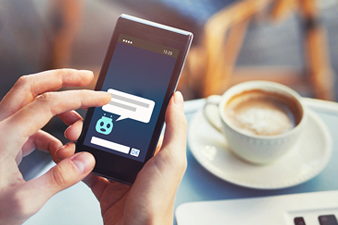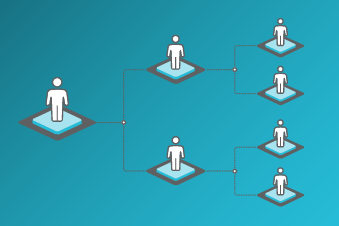
Has your shared services organization continued to advance in terms of customer service and services offered? If not, it may be time to consider an upgrade. In order to continue to bring value to the business and keep costs down, shared services organizations must innovate, and ScottMadden can help.
Why Innovate to Improve Shared Services?
Many companies transformed their service delivery models several years ago and are now seeking to improve and optimize services. Once the services are established, organizations typically want to provide enhanced service levels by improving processes, expanding the use of technology, lowering costs, or investing in training and development in an effort to decrease turnover.
But what happens after services are stabilized and optimized? Most organizations seek to refine their service delivery model. This refinement may be motivated by a variety of reasons: business needs have changed (e.g., an acquisition of a new business type has taken place); executives have recognized the success of shared services and want to expand capabilities (e.g., a desire to add accounts payable and receivable to a supply chain service center); or the complexity of services has increased and the organization needs to respond appropriately (e.g., customers now expect end-to-end recruitment support, starting from requisition creation through to onboarding). This increase in maturity from transformation to refinement is depicted in the image below.
Figure 1: Shared Services Maturity Curve


Keys to Refining Existing Shared Services
In order to refine your existing shared services model, there are a few key tactics to consider:
Create a continuous improvement culture by encouraging employees and customers to identify and share opportunities to enhance processes. Once improvements are identified and vetted, the shared services function should identify and involve participants from all functions the process touches. This creates an end-to-end process redesign approach that will eliminate functional silos and potential future workarounds. Assigning an owner to the process to oversee the design, performance, and investment can also encourage continuous re-evaluation of how well operations are working. Metrics can help to gauge the success of these improvements, but all metrics should be selected carefully to truly measure success and to find additional ways to improve operations.
Ensure customers are satisfied by continuing to compare satisfaction to your baseline, even as improvements are made. Surveys primarily take three forms and can be used to gauge satisfaction, as well as provide a holistic picture of performance:
- Point-of-use surveys are a brief satisfaction questionnaire issued immediately after a service is complete, such as an automated, one- to three-question survey issued when a case is closed. This survey type is limited to measuring satisfaction on key dimensions of service, such as customer representative friendliness, accuracy, and speed
- Regularly scheduled surveys may be distributed annually, semi-annually, or quarterly, depending on the organization. These are sent to a broad base of customers and potential customers and contain questions that are consistent each time, providing an opportunity for longitudinal analyses. These surveys tend to be longer, focus on all services offered, and provide an overall assessment of satisfaction and service levels and a source for improvement opportunities
- Ad-hoc surveys are one-off data collection efforts often focused on a specific pressing issue that needs to be addressed. These surveys are typically issued to a smaller subset of the customer population for near-term improvement needs
Leverage technology to optimize service delivery by working with the service center, field, and centers of expertise to understand what systems are helping or harming the success of the service center. Most service center technology is established during the transformation stage, but process improvements may warrant a new and better way to complete a task. ScottMadden recommends that you revisit your system roadmap frequently to determine if modifications are needed and to re-evaluate technologies as you consider expanding services.
Manage the change throughout any refinement initiatives. Customers want to know their feedback from surveys and other avenues is being incorporated, so frequently communicate the customer-driven changes being implemented by the shared services organization. Regardless of the maturity of the organization or the specific type of change taking place, you must continue to market and promote the model. This well-planned effort in communications, education and training, and marketing will reinforce the vision and objectives of the organization and ultimately result in its continued success.
Taking it to the Next Level
After companies implement and refine shared services, they should look for opportunities to expand and better support their customers. Here are a few strategies that may work for your organization:
Offer new or expanded services: Companies can expand their shared services operations by offering more services, such as adding finance, IT, or supply chain to an existing HR service center; by supporting more business units or even external customers, such as those from other companies (i.e., external sales of services); or by expanding services to new geographic locations. Offering global business services (GBS) is a popular option for mature shared services organizations to gain additional benefits through global management and integration. GBS organizations typically include higher-value activities and, by nature, are delivered to a global customer base. As your company implements both vertical (more services) and horizontal (more customers) growth strategies, you will realize increased value from your shared services model.
Incorporate intelligent automation: Intelligent automation continues to create an opportunity to take shared services organizations to the next level. Below is the HfS Intelligent Automation Continuum which shows the four types of automation:
Figure 2: HfS Intelligent Automation Continuum

Traditional data-center-level automation (from scripting and scheduling to process orchestration) includes manual, non-repeatable tasks (e.g., creating a macro to sort all the tabs in an Excel workbook), linear tasks (e.g., using a macro recorder to create a script to run a series of repeated steps), or the automation of orchestrated, complex activities (e.g., writing a complex visual application in Excel to handle certain activities). These are typically desktop or file-specific automations which supplement the work of an employee or group of employees and therefore usually result in some labor efficiencies.
Assisted and unassisted intelligent automation are the current cutting-edge solutions for service centers. In these instances, robotic process automation (RPA) is applied. RPA is when a code is created to execute a process which can be manually managed by a human (assisted) or applied entirely on its own to complete all or part of a particular process (unassisted). Unassisted RPA replaces the need for human processing, which will result in labor efficiencies, allowing organizations to redeploy resources to higher-value work.
Lastly, artificial intelligence (AI) differs in that it has self-learning capabilities and can handle non-repetitive tasks, as well as make sense of unstructured data without patterns. This results in a system that will get better with time as the application learns from experience. Solutions such as IBM’s Watson and IPSoft’s Amelia are working toward this end of the continuum. AI is most commonly deployed in a shared services organization as virtual agents. These customer interface tools are designed to mimic the role of online, human service representatives. They are able to connect company data, systems, and service delivery channels while relying on real-time information from ERPs, CRMs, and external sources. These agents can ask clarifying questions and escalate relevant information to humans, when necessary. If you are considering “smarter tech” for your organization, we recommend you start with RPA. This will replace the need for human intervention and is a great solution for digital steps that are time-consuming, repetitive processes or processes with logic-driven steps or static rules. Once you feel comfortable with RPA, we recommend you move down the continuum to virtual agents.


Invest in analytics: Another opportunity to take your shared services organization to the next level is to implement analytics. Analytics are not simply metrics—analytics means using data to drive insights and actions, ultimately changing how a company behaves and responds to the data received. In other words, metrics offer a historical look back, while analytics can forecast how to look forward.
Analytics is also not simply a buzzword. Numerous studies show that organizations are investing, or planning to invest, in developing their analytical capabilities. The organizations that have been early adopters confirm the belief that analytics has given them a competitive advantage. By analyzing the usage, patterns, and trends of service center data, organizations can ultimately determine where and how to realize additional cost savings. Taking it a step further, shared services can harness enterprise data at its fingertips to provide insights that benefit the broader enterprise.
Integrate social media: Lastly, social media can also help you innovate within your shared services organization. Social applications are gaining popularity, particularly when enabling employees to collaborate, such as posting questions, resolving issues, and sharing new ideas. In HR, where social media is gaining even more ground, talent acquisition can be significantly enhanced. A recent ScottMadden study found that 91% of new hires referred by high-performing employees exceeded performance expectations after 12 months. These referrals are often impossible if the organization does not have a strong branded presence on social media.
Take the Long View on Employee Opportunities and Capabilities

Not all opportunities to improve your shared services organization need to involve a financial investment. Encouraging employees to expand capabilities or seek opportunities within the shared services organization, or within the company, will motivate the right staff to deliver. This will also motivate employees to be around for the long haul. Listen to your employees. If employees want increased developmental opportunities or more interactions with their supervisors, then take those requests seriously. A sampling of employee feedback from ScottMadden research and its implications are shown in the graphic to the right.
Employees are also looking for personal development. A career path doesn’t have to be linear within the service center and end at a Tier 2 supervisor position. Each employee has unique skills and interests, and your shared services organization should strive to find and encourage those differences. For example, a Tier 1 processor in a finance shared services center learns the finance services of the organization better than any outside candidate. If interested, the processor should be considered a top candidate for a Tier 2 position and perhaps eventually a business unit finance role. This will take the employee out of the service center, but the long-term benefits to the service center, individual, and overall organization cannot be ignored.
In addition to development opportunities, many shared services organizations have an untapped free resource—Millennial staff. At the moment, all organizations have a multi-generational workforce, and service centers are no exception. Millennials are often very comfortable with technology and may even be useful as mentors for other staff. Less tech-savvy staff may not be as confident using many of the apps and other cloud-based applications that are used for collaboration or customer interaction in successful service centers. Younger staff can help to bridge that gap.
Conclusion
If your shared services organization has already refined its services through continuous process improvement, maintained well-tracked high levels of customer service, and leveraged existing technologies to optimize processes, then it may be time to innovate. Expanding the number of customers supported, incorporating artificial intelligence, investing in advanced analytics, or focusing on development and training of existing staff are just a few ways to mature your shared services organization. Let ScottMadden help you define what will work best in your unique business environment.
How ScottMadden Can Help
ScottMadden has helped many organizations take their shared services delivery models to the next level. We can help you identify an optimal approach to innovate and advance your existing shared services center by utilizing our expertise, leading practices, and past client experiences. ScottMadden has more than 25 years of shared services experience helping companies implement successful changes while avoiding potential pitfalls along the way.
To learn more about how to mature your shared services organization, contact us at info@scottmadden.com

























































